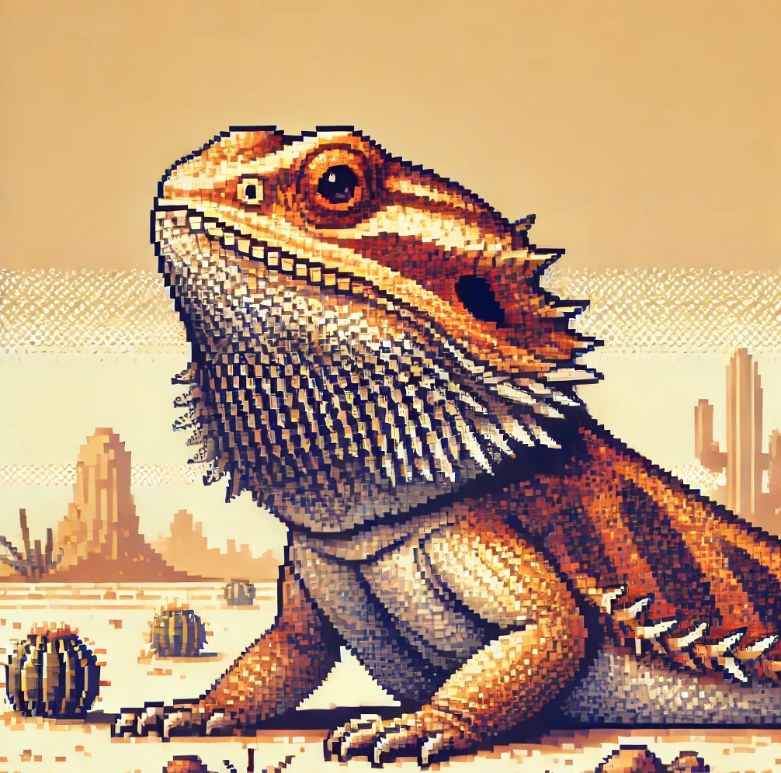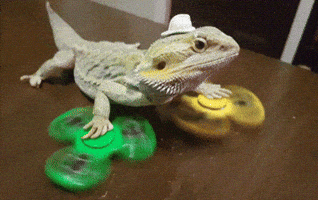
Is Your Bearded Dragon Secretly Struggling with Fatty Liver? Here’s What Science Says
Bearded dragons may look like tiny, scaly warriors, but did you know their livers might be waging a silent battle? Research reveals that a staggering 40% of these beloved reptiles develop significant fat accumulation in their livers—potentially leading to serious health issues. If you’re a reptile parent, here’s what you need to know to keep your scaly friend thriving.
Fatty Liver in Bearded Dragons: The Hidden Health Risk
You’ve probably heard about fatty liver disease in humans, but did you know your bearded dragon can experience something similar? Officially known as hepatic lipidosis, this condition happens when excess fat builds up in the liver, affecting its ability to function properly. Unlike in mammals, where fatty liver is linked to obesity and diabetes, scientists are still piecing together why this happens in reptiles.
What Causes Fatty Liver in Bearded Dragons?
While we don’t have all the answers yet, researchers have uncovered several potential culprits:
- Diet Matters: Feeding too many fatty or carb-heavy foods like mealworms, waxworms, or fruit could contribute to excess fat storage in the liver.
- Reproductive Cycles: Female bearded dragons are particularly prone to hepatic fat buildup, likely due to the energy demands of egg production.
- Lack of Exercise: If your beardie spends most of the day lounging rather than exploring, their metabolism may slow down, leading to fat accumulation.
- Environmental Factors: Temperature, lighting, and seasonal cycles all play a role in their metabolism. Without proper replication of natural conditions, their bodies may store fat differently.
What the Science Says: A Deep Dive into Bearded Dragon Metabolism
Recent research used lipidomics (a fancy way of analyzing fat molecules) to understand how hepatic fat affects bearded dragons. Scientists analyzed the liver fat composition of 36 bearded dragons and found some fascinating insights:
- Triacylglycerols (TGs) were the dominant fat type, and their levels significantly increased with hepatic fat content.
- Phospholipids, which help maintain cell structure, actually decreased as fat levels rose—potentially affecting liver health.
- Ether-linked glycerolipids (a special type of fat) increased, which is unusual and suggests a unique metabolic adaptation in bearded dragons.
- Unlike in humans, fatty liver in beardies doesn’t always cause inflammation, making it harder to detect when it’s actually a problem.

How to Keep Your Bearded Dragon’s Liver Healthy
Now that we know fat accumulation can be a concern, what can you do to protect your pet’s liver?
1. Watch Their Diet—It’s More Than Just Bugs
Think of your bearded dragon’s diet like a carefully balanced meal plan—not an all-you-can-eat buffet of fatty treats. ✅ Do feed a variety of greens (collard, mustard, and dandelion greens are great choices!).
❌ Don’t overdo fatty insects like mealworms—opt for crickets, dubia roaches, or black soldier fly larvae instead.
✅ Do offer occasional fruit treats, but in moderation.
2. Encourage Activity and Exploration
Reptiles may not go for morning jogs, but they still need to move!
- Create an enriched habitat with climbing branches, tunnels, and different textures.
- Let them out for supervised “floor time” to explore and get exercise.
- Offer food in a way that encourages movement—like making them “hunt” for their meal.
3. Optimize Their Environment
Temperature, lighting, and humidity all play a role in their health. Make sure your setup includes:
- A proper heat gradient (95-110°F basking spot, 75-85°F cool side)
- UVB lighting to support metabolism and vitamin D3 synthesis
- A natural day/night cycle to mimic their wild environment
4. Schedule Regular Vet Check-Ups
Many liver issues go unnoticed until it’s too late. If your beardie starts showing signs of lethargy, appetite loss, or bloating, it’s time for a vet visit. Blood tests and imaging can help catch issues early.
The Bottom Line: Bearded Dragons Are Unique, and So Is Their Fat Metabolism
Unlike humans, where fatty liver is often linked to obesity and diabetes, bearded dragons seem to tolerate high liver fat levels much better. However, researchers are still working to determine when fat accumulation crosses the line into a health hazard.
By providing a balanced diet, keeping your dragon active, and ensuring their habitat mimics natural conditions, you can help reduce their risk of developing serious liver issues. Want to learn more about cutting-edge pet health research? Subscribe to our newsletter and stay informed!
🐉 Share Your Beardie’s Story!
Does your bearded dragon have a favorite activity or diet that keeps them thriving? Share your tips and experiences in the comments below!

